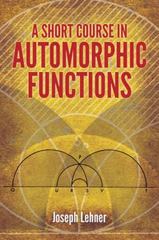Question
What is the base rate fallacy? Select one: a. The fallacy of miscalculating the base-rate of a kind of event, when assessing the probability of
What is the base rate fallacy?
Select one:
a. The fallacy of miscalculating the base-rate of a kind of event, when assessing the probability of a particular instance of that event conditional on some other event.
b. The fallacy of neglecting the base-rate of a kind of event when assessing the probability of a particular instance of that event.
c. The fallacy of neglecting the base-rate of a kind of event when assessing the probability of a particular instance of some other kind of event conditional on the first kind of event.
d. The fallacy of neglecting the conditional probability of a kind of event conditional on some other event when calculating the base rate of the first kind of event.
e. The fallacy of neglecting the base-rate of a kind of event when assessing the probability of a particular instance of that event conditional on some other event.



Step by Step Solution
There are 3 Steps involved in it
Step: 1

Get Instant Access to Expert-Tailored Solutions
See step-by-step solutions with expert insights and AI powered tools for academic success
Step: 2

Step: 3

Ace Your Homework with AI
Get the answers you need in no time with our AI-driven, step-by-step assistance
Get Started


